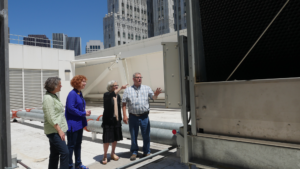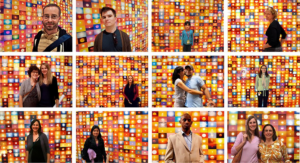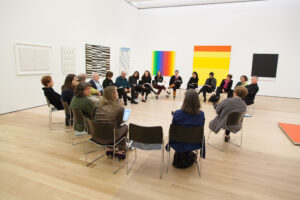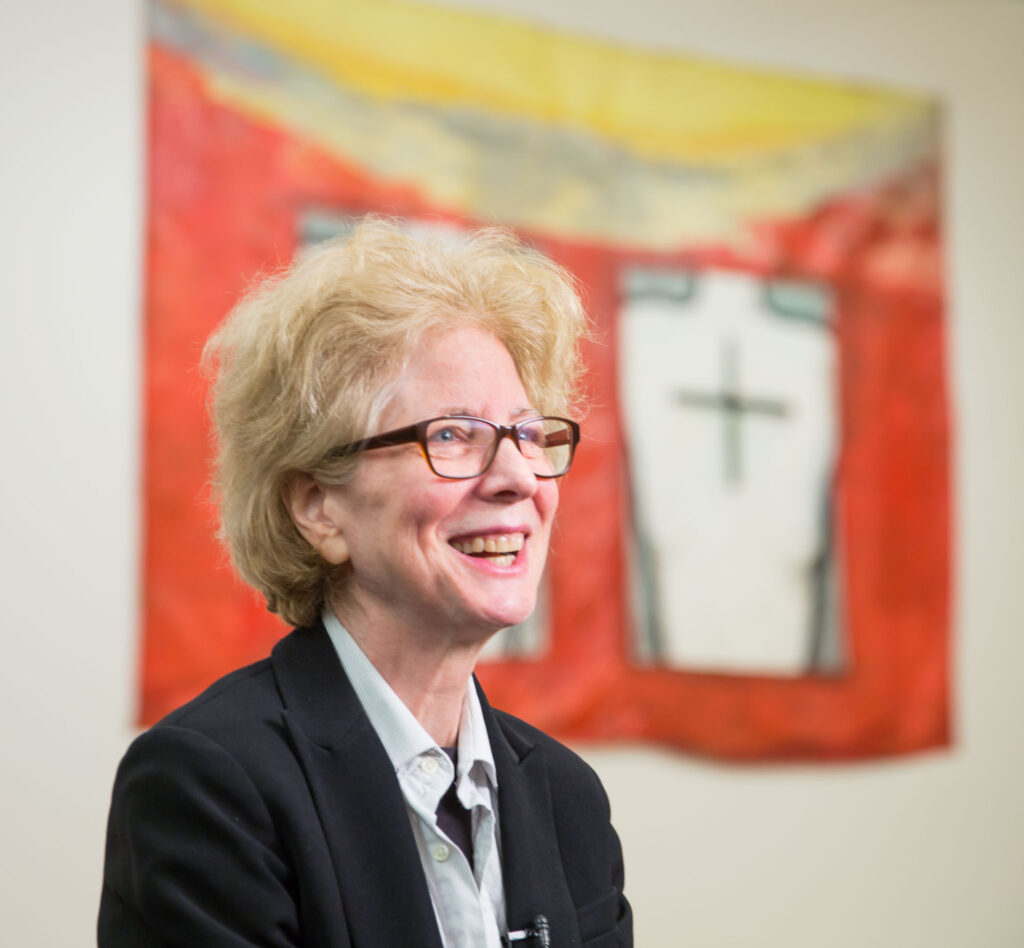
Julia Scher describes Predictive Engineering as an “episodic, self-documenting and self-consuming work” that “gobbles up” previous iterations of itself. The surveillance-based artwork incorporates recording and display devices that respond to visitor movement in the galleries. In a playful yet unsettling commentary on the ubiquity of surveillance in our daily lives, monitors display a confounding combination of real-time footage and pre-recorded vignettes sometimes overlaid with cautionary messages.
Predictive Engineering was first conceived for SFMOMA’s Van Ness building in 1993, then updated by the artist in 1998 for the museum’s Mario Botta–designed building.
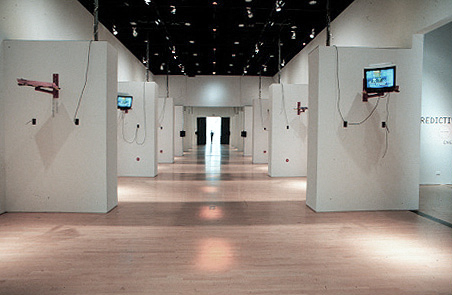
Predictive Engineering installed in SFMOMA’s Botta building, 1998
With the support of Artist Initiative team members, Julia Scher is now developing a third iteration of this groundbreaking work to coincide with the 2016 opening of SFMOMA’s Snøhetta expansion.
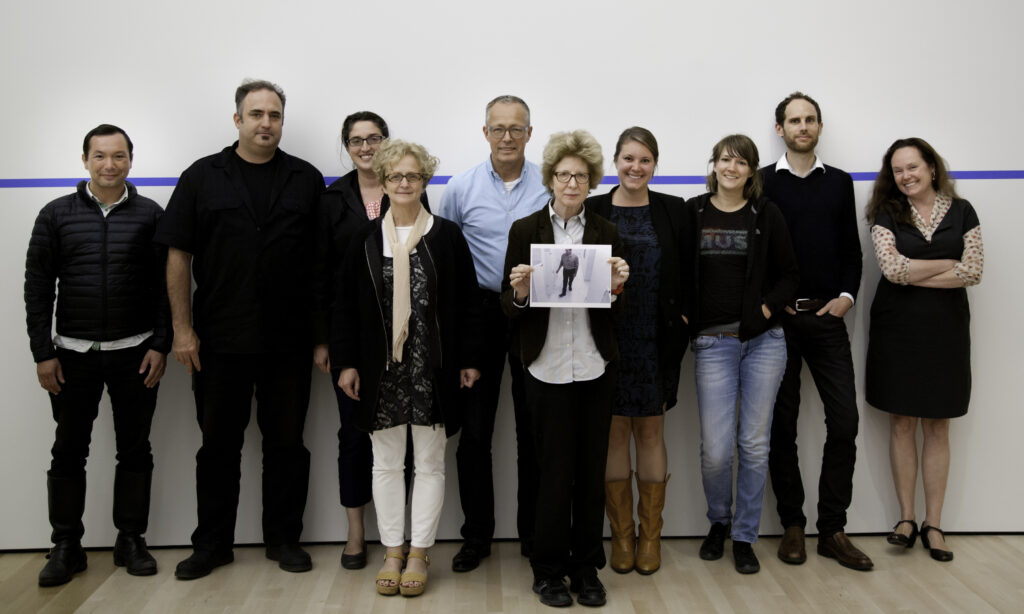
Julia Scher with Artist Initiative team members. Photo: Aurora Crispin
Each new version of the piece includes “time-capsule” elements of previous iterations. In many ways, Predictive Engineering exemplifies the challenges specific to time-based artworks that either materially change over time due to advancing technology or otherwise ask museums to interpret a given set of instructions with each installation.
While developing the 2016 version of Predictive Engineering, Scher and the Artist Initiative team are grappling with the following sample questions:
- How many new stories should be created, and which selections of original footage should be reincorporated into the 2016 iteration?
- Are professional actors needed to produce new staged vignettes, or would we rather work with staff and friends of the museum?
- Should users interact with Predictive Engineering through a mobile app? How would this impact the visitor experience? How would this impact the recording of real-time footage?
- Is the 2016 iteration of Predictive Engineering primarily concerned with lens-based surveillance, as has been the case with previous versions, or will it also engage privacy issues raised by aggregating information and data mining?
Through our work with Julia Scher, the Artist Initiative is archiving the evolution of Predictive Engineering from its beginnings in the early 1990s to the present while also developing new documentation models for complex artworks that will benefit the museum’s entire Media Arts collection. We look forward to sharing the results of this research in future articles.

